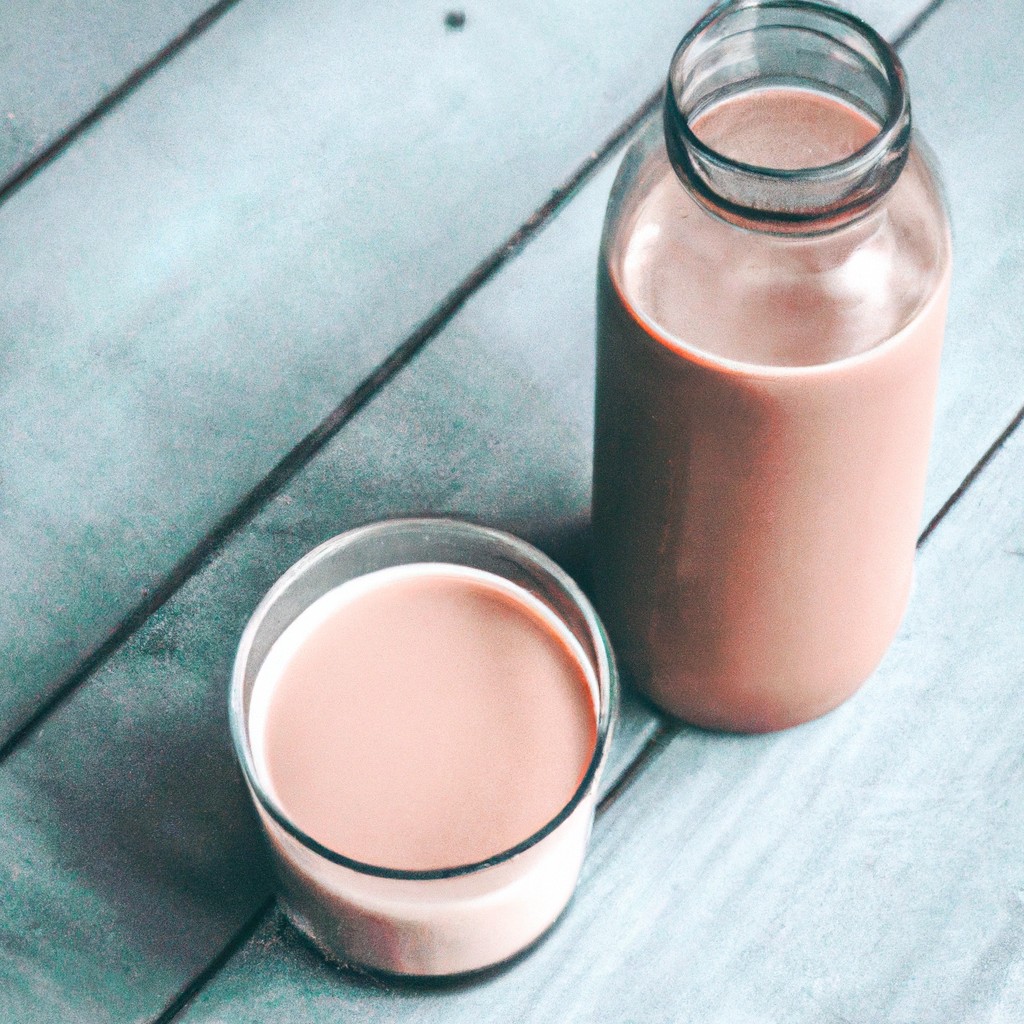This article will provide comprehensive instructions on how to prepare chocolate milk easily and correctly, ensuring an exceptional taste with every sip.
Key takeaways:
- High-quality cocoa powder for rich flavor profiles.
- Whole milk or alternative like almond or soy milk.
- Sweeten with granulated sugar or alternatives for different tastes.
- Vanilla extract adds depth, salt enhances flavor.
- Combine ingredients, adjust ratios, blend for frothiness, heat if desired.
Inside
Ingredients

Select high-quality cocoa powder for a rich taste; dutch-processed lends a smoother flavor, while natural cocoa can offer a sharper chocolate note.
Opt for whole milk for the creamiest texture, but understand that lower-fat or plant-based alternatives like almond or soy milk work well too.
Sweeten with granulated sugar, or consider alternatives such as honey, maple syrup, or agave for different flavor profiles.
Vanilla extract adds depth, and a pinch of salt can enhance the overall flavor.
Preparation
Begin with cold, fresh milk for the best taste; any fat content from skim to whole will work depending on preference. Choose a high-quality chocolate syrup or cocoa powder for a rich flavor profile; if using cocoa, you’ll need a sweetener like sugar or honey. For a smooth result, mix the chocolate or cocoa and sweetener first before slowly adding the milk, stirring continuously.
For those desiring a frothy texture, combine the ingredients in a blender or use a milk frother. Adjust the chocolate-to-milk ratio according to how intense you want the chocolate flavor. Consider heating the milk if you prefer a warm beverage, ensuring not to scald it; then, blend in the chocolate ingredients. Taste and tweak the sweetness or chocolate intensity as needed.
Steps to Make It
Begin by pouring your preferred amount of milk into a tall glass or jug, leaving some space at the top to prevent overflowing when stirring in the chocolate.
If using chocolate syrup, add it to the milk, aiming for about 1 to 2 tablespoons per cup of milk, adjusting to taste. For chocolate powder, use a similar ratio, or consult the packaging for specific proportions.
Stir the mixture vigorously with a spoon until the chocolate is fully dissolved and integrated into the milk. For powder, this may take a minute or two to ensure there are no clumps.
Alternatively, for a frothy texture, combine the milk and chocolate in a blender and blend for 30 seconds to one minute, or until the chocolate milk reaches your desired level of frothiness.
For cold chocolate milk, serve immediately, or for a warm treat, heat the mixed chocolate milk on the stove over medium heat, stirring occasionally, until it’s warm to your liking. Avoid boiling to prevent a skin from forming on the surface.
Optional: Enhance your chocolate milk by adding a pinch of cinnamon, a drop of vanilla extract, or a dollop of whipped cream for an indulgent twist.
How to Store
Once your chocolate milk is ready, refrigeration is key. Store it in a tightly sealed container and place it in the coldest part of your refrigerator, not in the door where temperature fluctuations are common.
Aim to consume homemade chocolate milk within 2-3 days for optimal freshness and flavor.
If using store-bought chocolate milk, adhere to the expiration date printed on the packaging, and still prioritize keeping it cold after opening.
For an eco-friendly option, consider glass bottles over plastic, as they preserve the taste better and can be reused.
Remember, if at any point the milk develops an off smell or separation, it’s time to discard it.
Nutrition
Chocolate milk combines the nutritional benefits of milk with the antioxidant properties of cocoa.
One serving typically provides calcium crucial for bone health, vitamin D, which aids calcium absorption, and potassium, essential for muscle function.
The added cocoa increases the drink’s flavonoid content, which may contribute to heart health.
However, it’s important to be mindful of the added sugars; different brands and recipes vary in sugar content.
The presence of milk proteins like casein and whey also make it a good post-workout recovery drink.
Choose a version with less added sugar to maximize health benefits.




